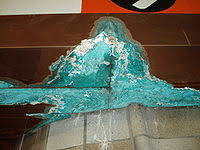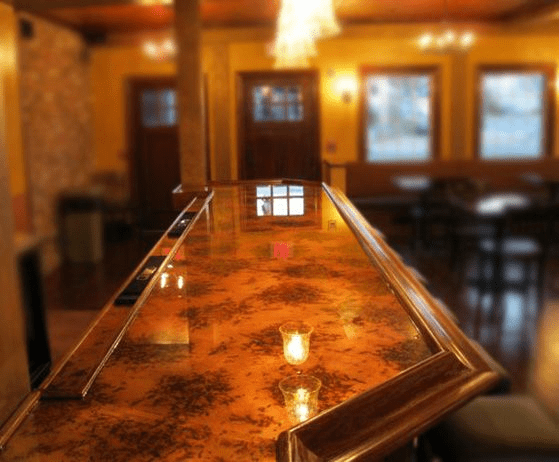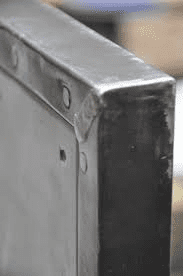FREQUENTLY ASKED QUESTIONS
About our work surfaces.
The metal is adhered to the timber substrate using a flexible adhesive which still allows the metal to expand and contract under thermal movement when exposed to differing room temperatures.
This is subject to the up keep, both zinc and copper tone down to a darker matt finish, zinc can be cleaned with bar keepers friend which prevents it from going to dark and keeps that French Parisian bistro look. Copper will naturally form its own patina when subject to the elements i.e air and water, this process is called oxidisation and causes the copper to tone down and darken, eventually if copper is left out in the rain long enough it will start to turn green this process is called Verdigris from the french word meaning to green, im sure you have seen old church roofs that are green this is copper that has Verdigris, please do not worry this will never happen to an internal application in a kitchen or bar as it takes approximately 20 years for the copper to turn green and that is only when exposed to the elements. However if regularly polished with a Brass polish it will maintain most of its shineyness.
I want this to be abundantly clear to anyone thinking about purchasing a copper or zinc worktop or bar, they are designed to show the history of the life of the worktop, this is part of the charm of one of these pieces and is a characteristic of the material. The patina which i mentioned earlier is a self-preserving coating which forms to protect the metal from errosion, it occurs through a chemical reaction with whatever it comes into contact with, this is enhanced if the surface is wet as water and oxygen cause oxidisation, so if you leave a wet cup on the surface it will leave a ring mark, this may seem unsightly at first but what you will find as time goes by and you leave several more cups and prehaps spill some lemon juice or ketchup, is that you are left with a subtle canves that has been painted by your familys use of the worktop, a story of its time in your house which can look quite stunning.
Scratches are inevitable and unavoidable, these are hard metals but they are the softer of the hard metals, the same applys to scratches as applys to staining, they are part and parcel of a zinc or copper worktop, if you have a worktop which has been treated with our antiquing agent and you scratch it you will notice that the scratch will be the colour of the shiney new metal, this is where the patinas self healing qualities come into play, as over time the patina will dull the metal back down to blend in with its surrounding darker metal and fill the void of the scratch, the metal has self healing properties, this is not a fast process but it does happen over time.
Much like your copper pipes that feed the water to your kitchen sink, both zinc and copper are soldered using a lead free solder, again this is a s much a part of zinc and copper smithery as anything else and is part and parcel of having a zinc or copper worktop, the solder is always filled away into a neat line which can look quite effective against the copper and blends in with the zinc.
This is a frequently asked question and the short answer here is no it will not! The long answer is to do with the level of Patina that the copper needs to prolong its life, that is why after about 20-30 years copper roofs on churches and the like turn a bright green colour known as ‘Verdigris’ which is a French term meaning ‘to green’ this only happens when copper is exposed to inclement weather for a period of time, the repetitive wetting and drying out of the copper causes the oxidisation and the patina to form the protective green layer. What you can expect is a slight dulling down from the initial very bright copper colour to a deeper orangey brown.

In theory yes, the application of moisture and oxygen are what causes the patina to form therefore an application of a clear lacquer of some sort or a poxy resin would achieve this however this is not a service we recommend or provide. There are a couple of drawbacks to taking this approach with a zinc or copper work surface. It nullifies all the hygienic benefits that come with a zinc or copper worktop but more disappointingly over time a lacquer will wear away, blister and peel and what you are left with is an unsightly finished product. A poxy resin will last much longer, however to apply a poxy resin you need some sort of border surrounding the surface to keep the resin in place as it sets which means although you will have a nice shiny looking copper or zinc work surface the edges will be a timber or some other material.

No! Both zinc and copper have a much higher melting point than that convected by a hot pan or saucer only a very intense naked flame would be capable of melting the metals.
No ! The Copper or Zinc is folded under the surface of the worktops and filled down to ensure no sharp edges, all surfaces are rigorously inspected before they leave our fabricating facility.

For any further queries please do not hesitate to call and talk to one of our team who will be happy to help.